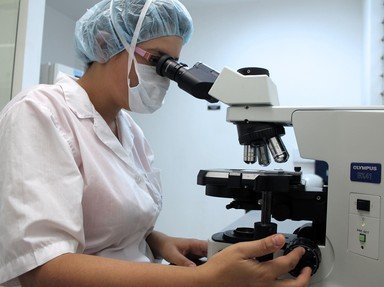Quiz Answer Key and Fun Facts
1. First of all what is ATP? It is a molecule synthesised during respiration which is used as a source of immediate energy. When 6 molecules of oxygen react with 1 molecule of glucose (i.e. respiration) what is the maximum yield of ATP?
2. As well as being involved with respiration, ATP also plays a vital role in photosynthesis. One molecule of ATP provides the energy needed to convert two molecules of glycerate-3-phosphate (GP) into two molecules of glyceraldehyde-3-phosphate (GALP). In what cycle does this occur?
3. In the human body ATP is used for a huge range of actions. One such action includes muscle contraction. Which mechanism involves the drawing of actin microfilaments between myosin microfilaments?
4. The muscle contractions which ATP facilitates allow mammals to maintain a constant body temperature. One obvious example is shivering, as this releases heat. Which action involving ATP is another example of how mammals raise their body temperatures?
5. In order to succeed in the hourly games which are primarily based on speed you have to have nerves of steel! In neurones the cation pump in the axon membrane maintains the resting potential needed before an impulse can be sent from the central nervous system. How is this resting potential maintained?
6. Sometimes you have to work to get what you need and this is just as true in living cells. Plant cells require ATP to absorb essential mineral ions from the soil against a concentration gradient. Which plant cells are involved in the active uptake of ions?
7. As well as keeping you alive, if it were not for ATP we would not be alive in the first place. ATP provides the energy to move the "tail" of a sperm cell to move, allowing it to reach an egg cell. What feature of a sperm cell means that many ATP can be produced?
8. As well as being produced in respiration, ATP is needed to carry out respiration. In which stage of respiration is ATP required?
9. If it were not for ATP, much of the glucose in our blood would pass out of our system in urine. In which part of the kidney is all of the glucose actively reabsorbed from the filtrate back into the blood?
10. Finally, without ATP you would not be able to see this quiz. Once light has fallen on the light receptive cells in the eye, photo-pigments within these cells are broken down and so must be re-synthesised so that other images can be seen. What are the names of the two photo-pigments found on the retina?
Source: Author
doublemm
This quiz was reviewed by FunTrivia editor
crisw before going online.
Any errors found in FunTrivia content are routinely corrected through our feedback system.

